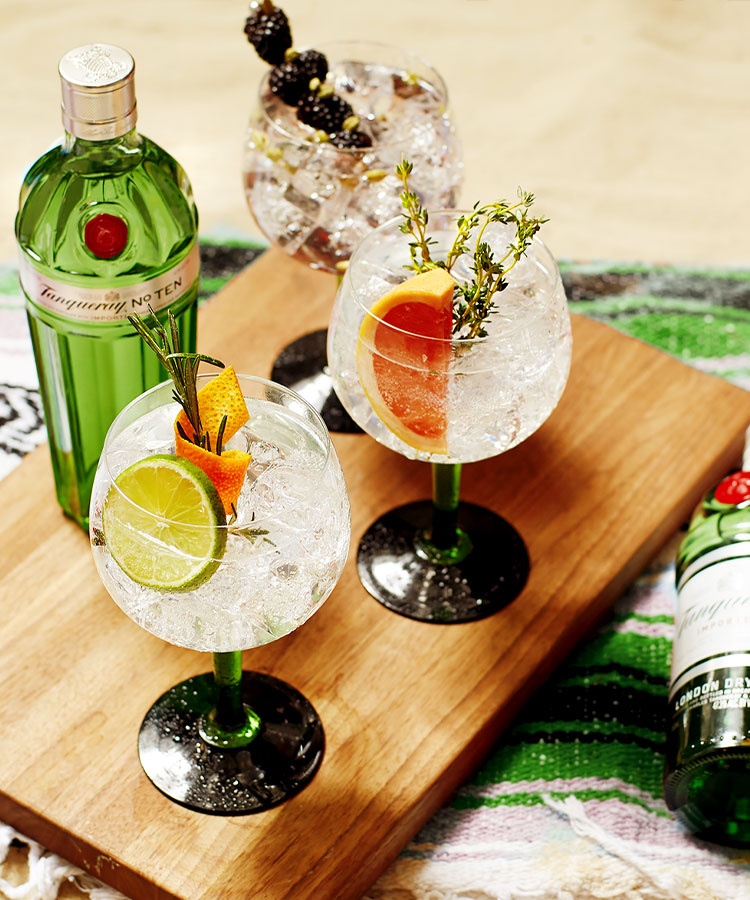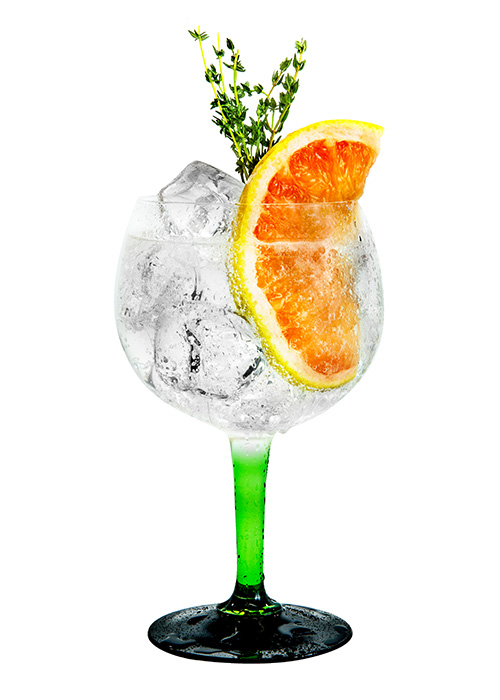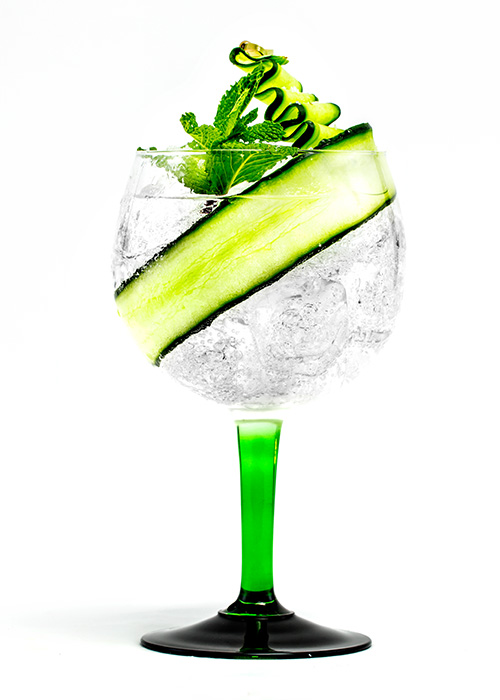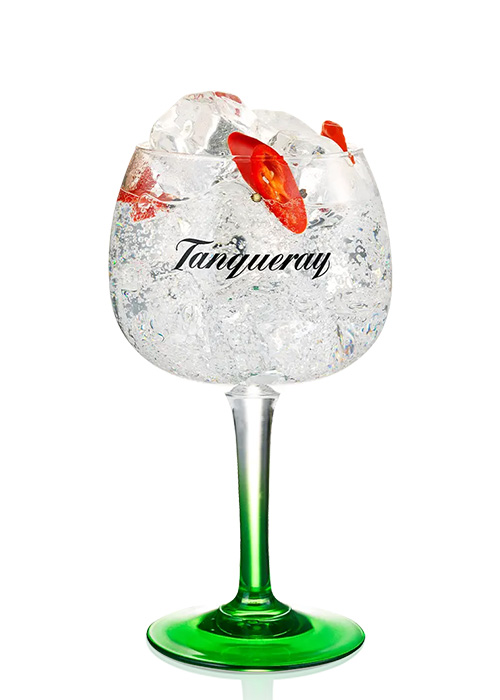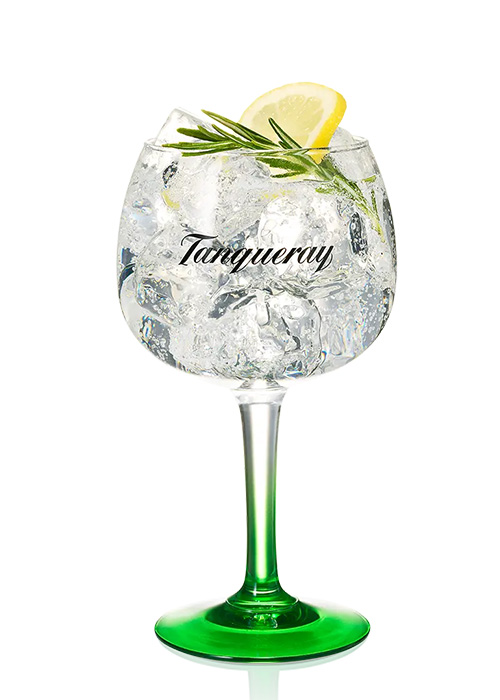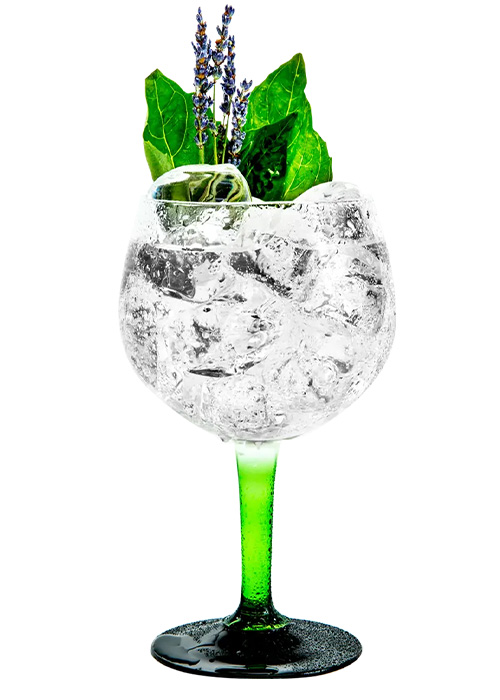
With all due respect to pansies and daffodils, it’s not early blooming flora that mark the start of springtime for us. We observe the official change of seasons by the emergence of another perennial: the Gin & Tonic.
It’s a drink that hardly requires an introduction, as it’s often the first thing we learn to order at a bar. But unlike other “starter” cocktails, the good old G&T is a combination we find ourselves coming back to again and again.
And we’re hardly the first. The Gin & Tonic has been wetting whistles for generations, going back to the 19th century when a quinine tonic was first prescribed to British colonial troops as an anti-malarial drug. To help that bitter medicine go down a bit easier, it was mixed with an ingredient that was never far from British supply lines, and, unlike water, reliably potable: gin.
The drink was soon being served at garden parties and racing tracks far from the British Empire’s borders. Memorably, Winston Churchill quipped that “Gin and tonic has saved more Englishmen’s lives, and minds, than all the doctors in the Empire.”
However, there can be no G&T without the “G,” and that’s where Tanqueray comes in. Charles Tanqueray first introduced his London Dry Gin in 1830, coinciding closely with the rise of the Gin & Tonic at home and abroad. In the nearly two centuries that have followed, Tanqueray has become closely associated with the drink thanks to its harmoniously balanced blend of four distinct botanicals: juniper, coriander, angelica, and licorice.
The resulting gin boasts a unique herbal flavor profile and a dry finish that’s tailor-made for countering tonic water. It took home a double gold medal at the 2021 San Francisco World Spirits Competition, and was named the Bartender’s Choice of Gin for eight consecutive years at the Drinks International Awards. But even more importantly, it’s been the go-to gin for millions across the globe when requesting at G&T.
Now that spring has properly sprung, we’re witnessing the “high” season of this year-round cocktail, which seems a natural complement to backyard barbecues, front porch hang sessions, and lazy beachfront afternoons. To ensure that your next Gin & Tonic can be enjoyed to its fullest potential, we’ve put together a brief primer on how you can upgrade this most essential of warm- weather drinking experiences below.
Switch the Citrus
The lime wedge that traditionally complements a Gin & Tonic is far more than a mere garnish, as many consider it to be the drink’s unofficial third ingredient. And with good reason, because its aromatic oils add another dimension to the experience, while the tart juice produced by a quick squeeze introduces a sour, acidic edge.
Though lime is the classic choice, there’s no reason why another candidate from the citrus family can’t be substituted. You might swap in a slice of lemon for a little extra zing, or instead introduce grapefruit to raise the tartness and bring out some of Tanqueray’s existing grapefruit flavors.
Cool It With Cucumber
Perhaps you’re feeling like breaking from citrus entirely, in which case we say: 1) Go for it, and 2) What about cucumber? By its very presence, a few sliced rounds of the cylindrical vine fruit will give your G&T instant garden party appeal. We chalk it up to cucumber’s starring role in the classic crustless sandwich that seems to magically appear at every outdoor social event from April to August.
But a couple of cuke slices contribute more than just pleasant associations. While composed of 96 percent water, cucumbers will add a subtle and cooling vegetal flavor to the proceedings.
Set to ‘Spicy’
If a cucumber garnish might chill a Gin & Tonic, our next entry sets out to do the opposite. A G&T can be turned spicy in the same way that a taco can, by topping it with a couple slices of jalapeño pepper.
Just remember that peppers sit on a sliding scale of heat intensity. If you’re feeling more ambitious, you might reach for a Thai, a cayenne, or a habanero. And if you’re the type who looks forward to complementing your G&T with a Carolina Reaper, we salute you (although we may not follow your example).
Do as the Spanish Do
In Spain — where, curiously, the drink loses its ampersand — a “Gin Tonic” is built in a bulbous, long-stemmed, glass that will better accommodate a plethora of garnishes. Rather than settling for a single citrus wedge, a Gin Tonic might include an entire round of lemon or lime, plus a sprig of rosemary, a handful of juniper berries, or whatever other ingredients might contribute their aromatics and pull out the gin’s botanical flavors.
Go Down the Garden Patch
So far, we’ve been discussing what kind of ingredients might spruce up your Gin & Tonic, but we haven’t delved into where they’re coming from. Naturally, the best place to pull ingredients from is your own backyard, rooftop, or neighborhood garden. Of course, not all of us are so lucky — or inclined — to work a little plot or planter ourselves, in which case you can settle for placing a little mint or basil plant on your windowsill to pluck from later. Aside from the aromas and flavors that a fresh-picked sprig of mint will contribute, you’ll have the satisfaction of having grown the ingredient yourself.
This article is sponsored by Tanqueray.
